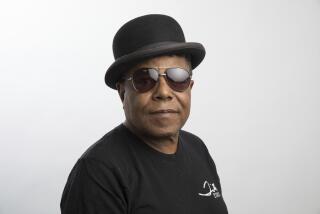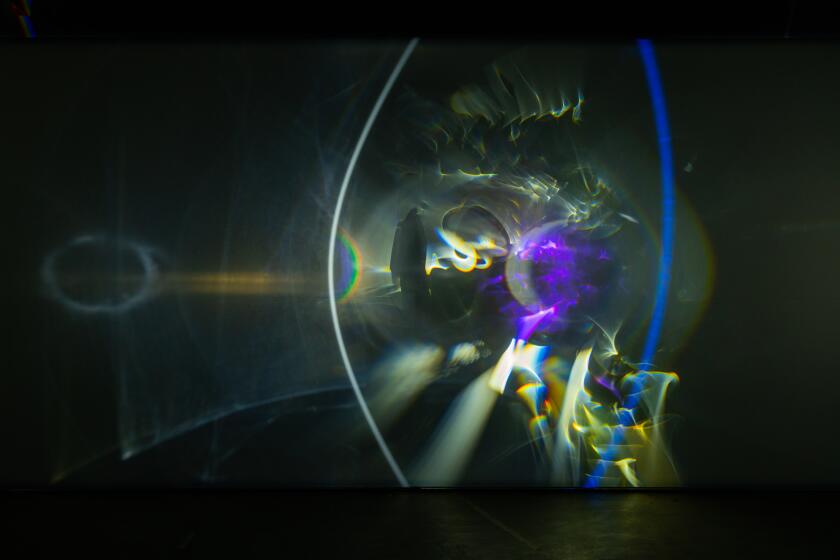Science Museum Plans to Add Ecology Wing
On any day at the California Science Center, screeching children gather around “Gertie’s Guts,” an exhibit that shows in excruciating detail the pliability of the human intestine.
The sequel: a rot room, dedicated entirely to the decay of animals.
Flesh-eating maggots and time-lapse footage of decomposing animals will be part of the dark chamber, which will also feature a model of a rotting log. Inside will be giant cockroaches and millipedes and other insects that help break down the dead and allow life to begin again.
“We think this will appeal to the 12-year-old boy in all of us,” said Diane Perlov, deputy director for exhibits at the museum.
The display is included in a planned ecology wing, which is part of a $110-million expansion to be announced today. The addition, expected to open in 2006, will nearly double the size of the Exposition Park museum, officials said. About $50 million has been secured, and officials hope to raise the rest from corporations, foundations, public funds and individual donors.
The hundreds of interactive displays and live animals planned for the new wing are intended to pose two difficult questions: Why have so many different forms of life blossomed on Earth and what role do these species play in the habitats in which they live?
“The big idea here is this amazing world, with a lot of connections,” said Jeffrey Rudolph, the center’s president and chief executive. “We’ll take visitors to different ecosystems, but also look at the connections between these places.”
Since opening five years ago today, the center has become a regular stop on the school field trip circuit and is praised by parents and teachers. About 1.3 million people visited the center last year, museum officials said. The only museum in the Los Angeles area that had a higher attendance is the Getty Center.
“The kids are able to see things that a teacher can’t bring into the classroom ... like the 40-foot woman,” said Don Kawano, a science specialist with the Los Angeles Unified School District.
The center’s exhibits cover two fields of science -- the physiology of people and animals and the technology behind the modern world. Displays include a 40-foot animatronic model of a woman that sheds its skin to show all the body’s major organs and a shaking table on which children can use building blocks to erect seismically safe structures.
The new wing will be divided into a variety of displays that will mimic ecosystems from around the world and try to help visitors understand how different species evolved to survive in those places.
For example, in the section on the Sonoran Desert, there will be a flash flood every eight minutes to illustrate that the desert gets most of its water in short but intense storms. Visitors will be able to watch honey ants fill huge sacks under their bellies with the water they need to withstand the desert’s dry spells.
The lesson: Adapt to a harsh environment or die.
“Instead of just saying an animal is pretty, we’re asking people to look at what makes it work,” Perlov said.
In a southeastern Asian rainforest display, children can climb into a harness and scale tall trees like researchers studying forest canopies. More than a dozen species of birds native to the region will flit about the giant outdoor area.
The ecology approach is “overdue and I wholeheartedly support it,” said Hartmut Walter, a professor of geography at UCLA. “I’m happy they’re not just showing us meteorites, crystals and atoms, but talking about things you can see and understand with your bare eyes in the wild.”
Walter said that Southern California should have a museum devoted to the science of ecology because the area has long been known as one of the nation’s hubs of biodiversity. In fact, the new wing will have an area on urban ecosystems and the way animals such as bobcats, peregrine falcons and coyotes adapt to surviving in cities.
Construction of the addition will occur amid an ongoing face lift for Exposition Park. Projects include an impending renovation of the neighboring Museum of Natural History; a $30-million community center scheduled to open in 2004; and a Los Angeles Unified School District charter school that will operate in conjunction with the Science Center and is being built in the park’s old armory.
When the ecology wing is completed, the museum plans to look upward for its next major expansion. A building devoted to the universe and humankind’s exploration of space has a target opening date of 2013.
More to Read
The biggest entertainment stories
Get our big stories about Hollywood, film, television, music, arts, culture and more right in your inbox as soon as they publish.
You may occasionally receive promotional content from the Los Angeles Times.









